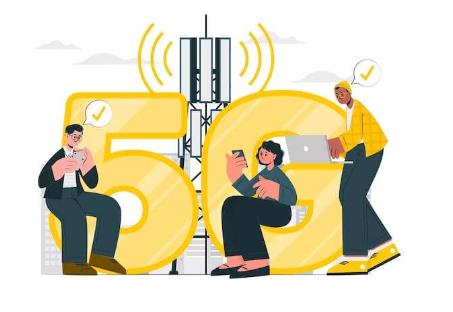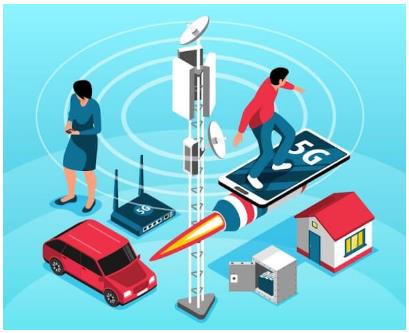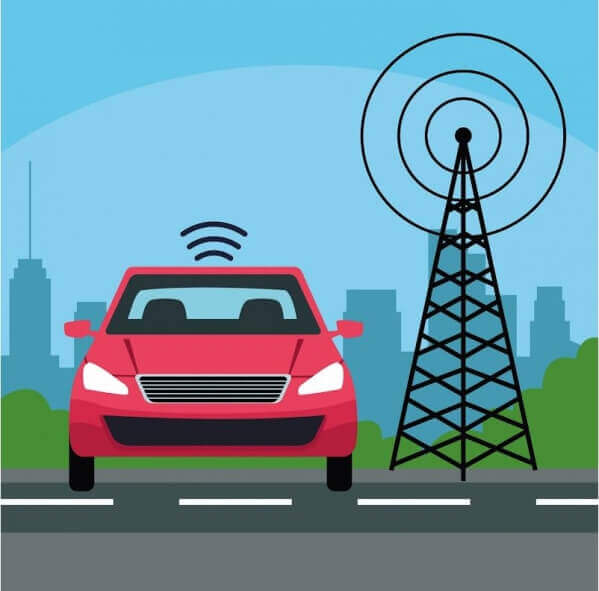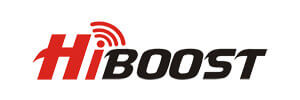In an era defined by connectivity, a reliable mobile network is fundamental. Yet, despite technological advancements, signal inconsistencies persist, disrupting communication and productivity. For Verizon users, this dilemma is all too familiar. Enter the Verizon Cell Signal Booster – a solution poised to revolutionise your connectivity experience.
The need for a Verizon Cell Signal Booster stems from the ubiquitous issue of weak or unstable cellular signals. Whether in remote areas, dense urban environments, or within buildings with poor reception, these signal gaps impede calls, compromise data speeds, and hinder the functionality of mobile devices.
This booster, leveraging innovative technology, amplifies existing signals, transcending barriers posed by distance or structural interference. By capturing weak signals, amplifying them, and rebroadcasting throughout designated spaces, it ensures consistent, robust connectivity for calls, texts, and data usage.
Investing in a Verizon Cell Signal Booster isn’t merely about mitigating signal issues; it’s about unlocking the full potential of your Verizon network, transforming frustrating dead zones into zones of connectivity. It’s a testament to embracing a future where connectivity isn’t a concern but an assurance.
Empower your connectivity. Empower your mobility. Empower yourself with a Verizon Cell Signal Booster.
Why is your Verizon signal poor?
Verizon, a telecom giant renowned for its reliable network, occasionally leaves users scratching their heads when faced with poor signal quality. Despite its expansive coverage, issues with signal strength can persist, causing frustration and hindering seamless connectivity. So, why does your Verizon signal occasionally falter? Let’s delve into the intricacies:
1. Distance from Towers:
The distance from Verizon’s cell towers plays a significant role. If you’re far from these towers, signal strength diminishes, leading to weaker connections or dropped calls, especially in rural or remote areas.
2. Obstructions and Interference:
Physical barriers like tall buildings, dense foliage, or geographical features can obstruct signals, causing interference and weakening the Verizon network’s reach. Inside buildings, materials like concrete and metal can also impede signals.
3. Network Congestion:
During peak usage times or in densely populated areas, network congestion occurs. This strain on the network can reduce signal quality as resources are distributed among numerous users simultaneously.
4. Device Issues:
Sometimes, the problem lies within the device itself. Outdated software, hardware malfunctions, or incompatible settings may contribute to poor signal reception.
5. Weather Conditions:
Extreme weather, such as storms or heavy rainfall, can interfere with signals, impacting their strength and consistency.
6. Carrier-Specific Factors:
While Verizon boasts widespread coverage, certain areas may experience signal variations due to carrier-specific network strategies or local regulations.
How to Address Poor Verizon Signals:
• Signal Boosters:
Consider investing in Verizon-approved signal boosters that amplify existing signals, overcoming obstructions and distance challenges.
• Location Optimization:
Position your device closer to windows or higher floors to enhance signal reception, especially indoors.
• Device Maintenance:
Ensure your device is updated, free from hardware issues, and configured correctly for optimal signal reception.
• Network Congestion Awareness:
Plan calls or data-heavy tasks during off-peak hours to mitigate the impact of network congestion.
• Report Issues:
Inform Verizon about persistent signal problems in specific locations; they may be able to address these concerns.
Verizon’s occasional signal woes are multifaceted, influenced by a variety of factors. Understanding these issues allows for proactive measures to improve signal strength and reliability, ensuring that you harness Verizon’s extensive network to its fullest potential.
Navigating poor Verizon signals involves a combination of device optimization, environmental adjustments, and, at times, leveraging technological aids like signal boosters. By comprehending the intricacies behind signal inconsistencies, users can take steps to ensure a more robust and consistent connectivity experience.

How can you improve your Verizon cell signal?
Boosting your Verizon cell signal doesn’t have to feel like an insurmountable challenge. Here are several effective strategies to enhance your connectivity:
1. Utilize Signal Boosters:
• Invest in Verizon-approved signal boosters designed to amplify weak signals, especially in areas with poor reception. These devices capture existing signals and redistribute them, significantly improving coverage indoors or in remote locations.
2. Optimize Device Settings:
• Adjust your phone’s settings for better signal reception. Enable Wi-Fi calling or switch to Verizon’s Advanced Calling feature, which prioritizes HD Voice calls over 4G LTE for clearer conversations.
3. Update Software and Firmware:
• Ensure your device’s software and firmware are up-to-date. Manufacturers often release updates that include enhancements for signal strength and network compatibility.
4. Positioning Matters:
• Indoors, move closer to windows or higher floors for better reception. Outside, try open spaces away from obstructions to maximize signal strength.
5. Network Extenders:
• Consider Verizon’s Network Extenders, which use your internet connection to create a mini-cell tower within your home, drastically improving indoor signal strength.
6. Report Issues to Verizon:
• If persistent signal problems plague specific locations, notify Verizon. They might address these concerns by optimizing network coverage in those areas.
By combining these approaches, you can significantly enhance your Verizon cell signal, ensuring a more reliable and robust connectivity experience, whether at home, work, or on the go.
How does a Verizon cell signal booster work?
Verizon cell signal boosters operate as a lifeline for improved connectivity. Here’s a breakdown of their functionality:
• Signal Capture: Boosters start by capturing weak existing signals from outside the building using an external antenna.
• Signal Amplification: These captured signals are then amplified significantly, enhancing their strength and clarity.
• Signal Redistribution: The boosted signals are broadcasted indoors using an internal antenna, providing robust coverage across designated areas.
• Overcoming Obstructions: Boosters effectively bypass obstructions like buildings or terrain, ensuring stronger signals reach your devices.
• Two-Way Communication: The booster facilitates seamless communication between your device and the Verizon network, ensuring reliable connections for calls, texts, and data.
By amplifying and redistributing signals, Verizon cell signal boosters bridge the gap between weak outside signals and your device, ensuring consistent and reliable connectivity wherever you are within the boosted area.

Choosing A Verizon Cell Signal Booster
Selecting the right Verizon cell signal booster involves considering several crucial factors to ensure optimal performance tailored to your needs:
• Coverage Area: Determine the size of the area requiring boosted signals. Different boosters cater to varying coverage ranges, from small rooms to larger buildings or outdoor spaces.
• Signal Strength: Assess the current signal strength outside your building. Understanding the signal strength helps in choosing a booster with the appropriate amplification power.
• Carrier Compatibility: Ensure the booster is compatible with Verizon’s network frequencies to guarantee seamless integration and performance.
• Type of Booster: Choose between home/office boosters or mobile boosters. Home/office boosters focus on indoor coverage, while mobile boosters cater to boosting signals on the go.
• Antenna Types: Consider the booster’s antenna setup. External antennas capture signals, while internal ones broadcast boosted signals indoors. Directional antennas are ideal for targeting specific signal sources, while omnidirectional antennas cover wider areas.
• Certifications and Regulations: Opt for boosters compliant with FCC regulations and Verizon’s approval to guarantee legality and performance standards.
• Additional Features: Some boosters offer additional features like automatic gain control, smart technology for adjusting to varying signal conditions, or remote monitoring capabilities.
By weighing these factors, you can confidently select a Verizon cell signal booster that aligns with your specific coverage needs and ensures consistent, enhanced connectivity for your Verizon devices.
Verizon Network Extenders: Home and Vehicle Solutions
Verizon Network Extender for Home:
• Enhanced Indoor Coverage: Designed for homes, these devices use your internet connection to create a mini-cell tower, boosting Verizon signals within your home. They significantly improve coverage in areas with weak or no signal, providing seamless connectivity for calls and data.
• Easy Setup: Simple installation involves connecting the extender to your internet router and registering it with Verizon. Once activated, it extends the Verizon network, offering coverage for multiple devices.
• Improved Voice Quality: By utilizing HD Voice technology, these extenders ensure crystal-clear voice calls, minimizing dropped calls or audio disruptions.
• Internet Connectivity: Alongside better call quality, they provide faster data speeds, especially in areas where Verizon signals struggle to penetrate.

Verizon Network Extender for Vehicle:
• On-the-Go Connectivity: Ideal for road trips or commutes, this device improves Verizon signal strength within vehicles, ensuring uninterrupted calls and data usage.
• Easy Installation: Plugging into your vehicle’s power source, these extenders require minimal setup, instantly amplifying signals for passengers’ devices.
• Enhanced Signal Reception: They combat signal fluctuations, maintaining a reliable connection even in areas with poor reception, such as rural roads or remote locations.
• Seamless Roaming: Continuity of connectivity is assured as you transition between areas, allowing for uninterrupted calls and seamless data usage during travels.
Verizon’s Network Extenders for home and vehicle offer tailored solutions to combat signal woes, delivering enhanced connectivity whether you’re at home or on the move, ensuring you’re always connected, wherever you go.
Finding Your Verizon Cell Phone Signal Strength & Cell Tower Location
Verizon users seeking to optimize their connectivity can access vital information about signal strength and tower locations for an enhanced experience:
• Checking Signal Strength: On most Verizon phones, accessing the Field Test Mode can reveal signal strength in decibels (dBm) or bars. This feature varies across devices but often involves dialing specific codes like 3001#12345#.
• Signal Measurement Tools: Various mobile apps provide detailed insights into signal strength, including dBm readings, allowing users to identify the strongest areas for better reception.
• Verizon’s Coverage Map: Utilize Verizon’s online coverage map to locate nearby cell towers and gauge coverage in specific areas. This tool helps anticipate signal strength variations in different locations.
• Network Extenders & Boosters: Considering signal strength findings, invest in Verizon-approved signal boosters or network extenders to augment weak signals in your area.
Understanding your Verizon cell phone’s signal strength and tower locations empowers users to make informed decisions, optimize device placement for better reception, and potentially invest in signal-enhancing solutions for a more consistent and robust connectivity experience.
In a world reliant on seamless communication, maintaining strong cellular signals is non-negotiable. HiBoost, a leading provider of cell signal boosters, emerges as a game-changer in this landscape.

In summary, HiBoost offers a diverse range of signal boosters catering to both residential and commercial needs. Their devices are engineered to amplify weak signals, providing enhanced coverage for Verizon and other carriers. With easy installation and compliance with FCC standards, HiBoost boosters promise improved call quality, faster data speeds, and uninterrupted connectivity.
For businesses seeking to bolster their communication infrastructure, HiBoost stands as a reliable ally. Their commercial-grade solutions cater to various industries, ensuring consistent connectivity within office spaces, warehouses, or remote job sites.
HiBoost’s commitment to reliability, compatibility with multiple carriers including Verizon, and customer satisfaction solidifies its position as a go-to brand for addressing cellular signal challenges. Whether it’s improving signal strength in homes or enhancing connectivity for large-scale commercial setups, HiBoost’s signal boosters offer a transformative solution for ensuring uninterrupted communication.
To elevate your connectivity and streamline business operations, consider HiBoost – your gateway to stronger, more reliable cellular signals.
Important Things To Consider When Buying Best Cell Phone Booster For Rural Areas
Living in rural areas often poses challenges with cell reception, leaving many individuals disconnected and frustrated with unreliable signals. Enter the savior: cell phone boosters. These devices have revolutionized communication for rural dwellers, offering a lifeline to stay connected.
When it comes to purchasing the best cell phone booster for rural areas, navigating the options can be daunting. The right booster can significantly enhance signal strength, but choosing one requires careful consideration of various factors.
Firstly, understanding your location’s signal strength and frequency is crucial. Different boosters cater to specific frequencies, and knowing your carrier’s band can ensure compatibility for optimal performance. Additionally, considering the booster’s coverage area is vital. Rural settings often entail larger spaces, necessitating boosters with broader coverage to amplify signals effectively.
Moreover, the booster’s gain or amplification power plays a pivotal role. Assessing your area’s signal strength will determine the necessary gain to boost signals adequately without overpowering or causing interference.
Installation simplicity and whether the booster supports multiple users are also key considerations. A user-friendly setup and accommodating multiple devices simultaneously ensure seamless connectivity for households or small businesses.
Factor in the booster’s outdoor and indoor antenna capabilities, ensuring they’re suited to your specific landscape and property layout.
In this blog series, we’ll delve deeper into these considerations, providing insights into selecting the best cell phone booster tailored to rural needs. Stay tuned for expert guidance on amplifying your connectivity and bridging the rural connectivity gap!

1. Understanding Signal Booster Types: Choosing the Right Amplification Technology for Rural Connectivity
When it comes to ensuring robust connectivity in rural areas, selecting the right signal booster type is paramount. These boosters generally fall into three categories: cradle, vehicle, and home/office boosters, each serving distinct purposes.
• Cradle Boosters: Ideal for individual use, cradle boosters amplify signals for a single device placed within the cradle. They’re perfect for enhancing signal strength while driving, ensuring uninterrupted communication during road trips through rural regions. However, they might not suffice for larger areas or multiple users.
• Vehicle Boosters: Specifically designed for automobiles, these boosters enhance signals within vehicles. They consist of an external antenna to capture signals, an amplifier to boost them, and an internal antenna to distribute the amplified signal within the vehicle. Perfect for those frequently on the move in rural areas, these boosters maintain connectivity during remote travels.
• Home/Office Boosters: Tailored for larger areas, these boosters provide comprehensive coverage within homes or workplaces in rural settings. They consist of an external antenna to capture signals, an amplifier to strengthen them, and an internal antenna to distribute the boosted signal throughout the building. These boosters are versatile, accommodating multiple users and devices simultaneously, ensuring seamless connectivity across different rooms.
Selecting the appropriate booster type hinges on the specific needs of the user. For individual use during travel, a cradle or vehicle booster suffices. However, for homes or offices where multiple devices require connectivity over larger areas, a robust home/office booster is the ideal choice.
Understanding the distinct functionalities of each booster type enables users to make an informed decision based on their usage requirements, ensuring enhanced connectivity in rural areas.
2. Connection Type: Navigating Carrier Bands and Frequencies
Navigating carrier bands and frequencies is a pivotal aspect when considering a cell phone booster for rural areas. Understanding the connection type specific to your carrier ensures optimal compatibility and effective signal amplification.
Cellular carriers operate on different frequency bands, often categorized as Band 2 (1900 MHz), Band 4 (1700/2100 MHz), Band 5 (850 MHz), Band 12/17 (700 MHz), and Band 13 (700 MHz). Each carrier predominantly uses certain bands to transmit signals, varying based on location and network infrastructure.
Identifying your carrier’s dominant frequency bands is crucial. This information is readily available through carrier websites or by contacting customer service. Once you ascertain your carrier’s frequency bands, choose a cell phone booster that supports those bands for optimal signal amplification.
Moreover, some boosters are compatible with multiple bands, offering versatility for users across different carriers. These multi-band boosters cater to a wider range of frequencies, ensuring better signal enhancement for various carriers operating in rural areas.
Another vital consideration is the booster’s ability to support both upload and download frequencies. While download frequencies are crucial for receiving signals, upload frequencies are equally important for transmitting data back to the cell tower.
When selecting a cell phone booster, ensure it covers both upload and download frequencies pertinent to your carrier’s bands. This comprehensive coverage guarantees a balanced and robust signal enhancement solution.
Understanding carrier bands and frequencies empowers you to make an informed decision when investing in a cell phone booster for rural areas. In the subsequent segment of this series, we’ll explore installation and placement considerations, optimizing your booster setup for maximum signal amplification. Stay tuned for expert tips on achieving an efficient booster installation in rural settings.

3. Coverage Range: Ensuring Seamless Connectivity Across Rural Landscapes
Coverage range stands as a crucial factor when selecting a cell phone booster for rural areas. Understanding and evaluating the coverage area ensures that the booster can effectively amplify signals throughout your intended space, whether it’s a home, office, or larger rural property.
Assessing the coverage range involves understanding the square footage or area that the booster can effectively cover with amplified signals. Boosters come with different coverage capacities, ranging from small areas to vast expanses, catering to various user needs.
For rural settings with larger spaces or properties, opting for a booster with a broader coverage range becomes essential. It ensures that amplified signals reach every corner, eliminating dead zones and providing consistent connectivity throughout the designated area.
Consider the booster’s specifications and the square footage it claims to cover. However, these estimations can vary based on external factors such as building materials, terrain, and signal strength outside the property.
Opting for a booster with slightly more coverage than your actual area ensures a buffer zone against potential signal fluctuations or unexpected obstructions that may hinder signal propagation.
Moreover, some boosters offer options for additional antennas or signal expanders to increase coverage range further. These accessories can be strategically placed to extend the signal reach, effectively eliminating any remaining dead spots.
When choosing a cell phone booster for rural areas, understanding and matching the coverage range to your specific property size is crucial for ensuring consistent and reliable signal amplification. In our upcoming segment, we’ll explore the importance of external and internal antennas, optimizing signal reception and distribution for enhanced coverage in rural settings. Stay tuned for expert insights on antenna placement and functionality.
4. Number of Users: Optimizing Connectivity for Multiple Devices in Rural Settings
Optimizing connectivity for multiple devices in rural settings is a pivotal consideration when selecting a cell phone booster. Understanding the booster’s capability to accommodate multiple users simultaneously ensures uninterrupted and reliable connectivity for everyone within the coverage area.
The number of users a cell phone booster can support at any given time is determined by its capacity and signal distribution capabilities. Boosters come with varying specifications, indicating the maximum number of devices they can effectively cater to without compromising signal strength or speed.
In rural areas, where households or small businesses may require connectivity for multiple devices concurrently, choosing a booster with a higher user capacity becomes essential. This ensures that everyone—whether family members, employees, or visitors—can enjoy enhanced signal strength without experiencing network congestion or slowed data speeds.
Moreover, considering the booster’s ability to handle diverse activities simultaneously is crucial. Whether it’s streaming, browsing, or making calls, a robust booster should efficiently manage different data-intensive tasks across various devices without sacrificing performance.
When evaluating a cell phone booster’s suitability for accommodating multiple users, look for specifications that detail its simultaneous user capacity and the ability to handle various data demands.
Investing in a booster that can cater to the number of users expected within your rural environment guarantees a seamless and enhanced connectivity experience for everyone. In our forthcoming segment, we’ll explore booster installation and the importance of strategic antenna placement for optimal signal distribution, ensuring consistent connectivity across multiple devices in rural landscapes. Stay tuned for expert guidance on setting up your booster for maximum efficiency.

In our comprehensive blog on selecting the best cell phone booster for rural areas, we dive into crucial considerations for optimal connectivity. Exploring signal booster types, connection frequencies, coverage ranges, and accommodating multiple users, this guide equips readers with essential insights.
Partnering with HiBoost, we highlight the significance of choosing the right booster type, understanding carrier bands, and assessing coverage needs. From analog to smart boosters, connection frequencies, and catering to diverse user demands, HiBoost’s solutions stand out for their reliability and efficiency in amplifying signals across rural landscapes.
This guide serves as a roadmap for users seeking seamless connectivity in remote areas. HiBoost’s commitment to delivering top-notch boosters aligns perfectly with the blog’s focus on empowering readers to make informed decisions for enhanced rural connectivity. Discover the perfect cell phone booster with HiBoost and elevate your connection in rural settings.
